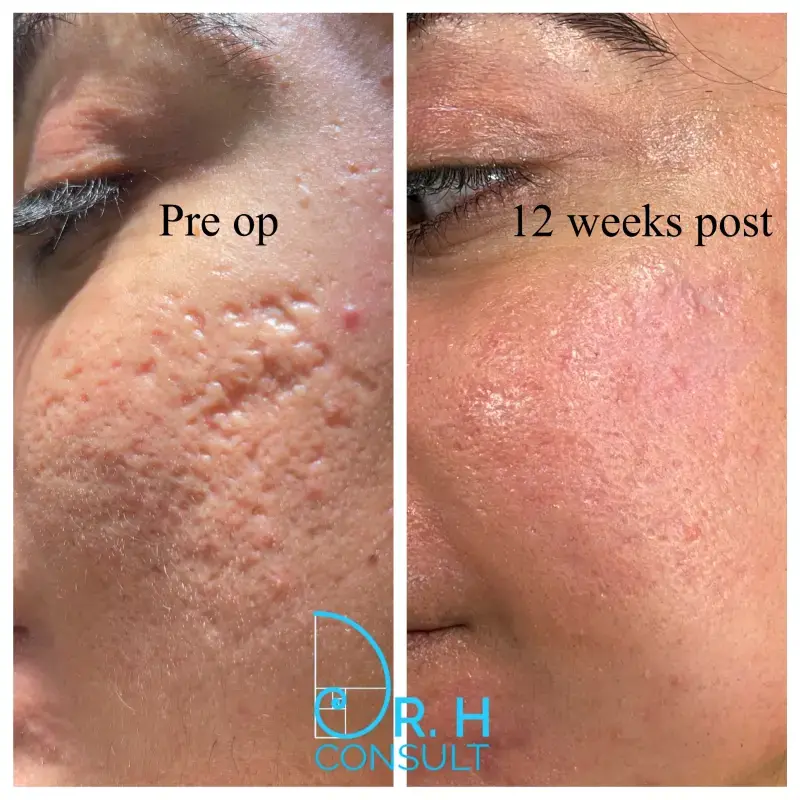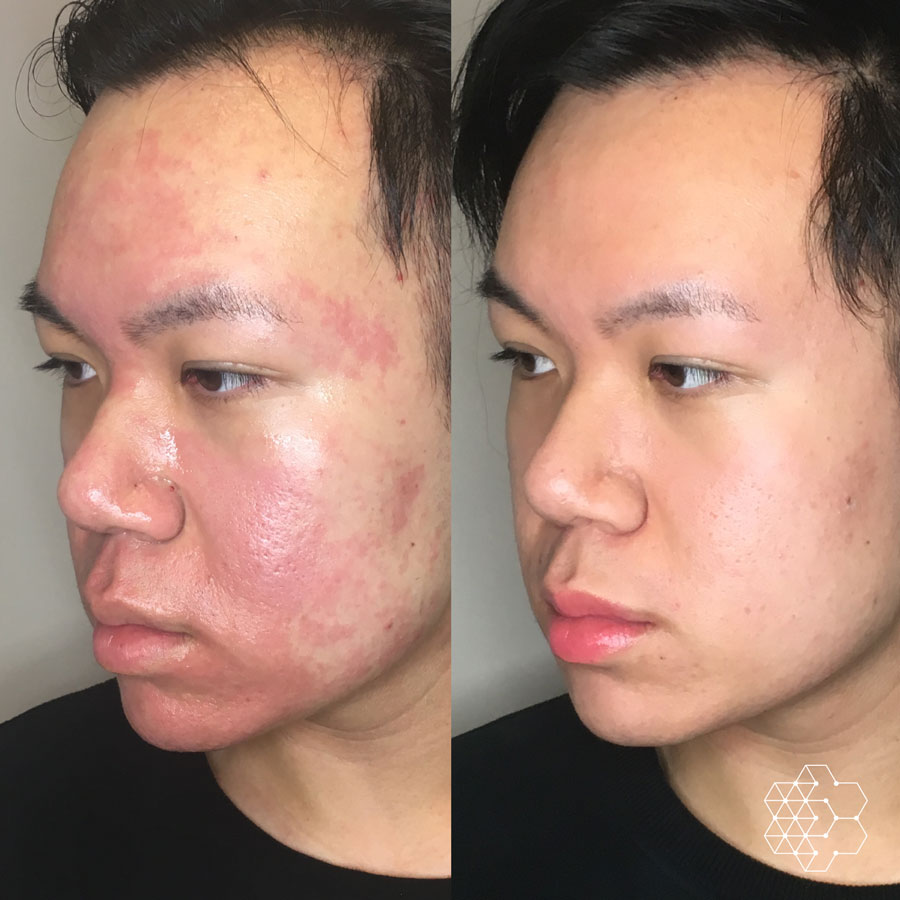Advanced Acne and Acne Scars Treatment: Say Goodbye to Acnes
Advanced Acne and Acne Scars Treatment: Say Goodbye to Acnes
Blog Article
Understanding the Various Skin Disease and Reliable Treatment Options for Acne Scars
Acne scars represent a complex interplay of skin problems that considerably effect individuals' self-worth and total skin wellness. Comprehending the unique types of acne scars-- atrophic and hypertrophic-- alongside their underlying causes, is pivotal for identifying efficient treatment strategies. Various therapeutic alternatives exist, varying from sophisticated dermatological procedures to all-natural treatments. The efficacy of these therapies usually pivots on individualized assessments by certified specialists. As we check out the landscape of acne scar monitoring, it ends up being evident that the trip toward clearer skin might involve even more than just topical solutions.
Kinds Of Acne Scars
Acne marks can materialize in various types, each requiring certain treatment strategies. Both key classifications of acne marks are atrophic and hypertrophic marks. Atrophic marks are defined by a loss of cells, resulting in clinically depressed locations on the skin. These scars are more identified into 3 subtypes: ice pick scars, which are slim and deep; boxcar marks, which are bigger and have well-defined edges; and rolling marks, which produce a wave-like appearance as a result of uneven skin appearance.
In contrast, hypertrophic marks result from an overflow of collagen during the healing process, bring about elevated areas on the skin. These scars are typically strong and can differ in shade, sometimes appearing red or darker than the bordering skin.

Causes of Acne Scarring
Marking takes place as a result of the body's all-natural recovery reaction to inflammation and injury created by acne lesions. When acne forms, it causes an inflammatory response, leading to the launch of different cytokines and growth variables that promote recovery. Nevertheless, this process can occasionally result in excessive cells formation or inadequate repair service, resulting in marks.
The main reasons for acne scarring consist of the severity of the acne itself, period of the lesions, and private skin kinds. Serious inflammatory acne, such as cysts and nodules, is more probable to lead to scarring as a result of deeper cells damage. In addition, incorrect handling of acne sores, such as picking or pressing, can aggravate tissue injury and swelling, enhancing the chance of scarring.
Hereditary predisposition likewise plays a substantial role; people with a family history of scarring go to a higher danger. Skin kind and shade can influence mark development, as darker skin tones might experience post-inflammatory hyperpigmentation, while lighter skin might create atrophic marks.

Treatment Choices for Scarring
Effective therapy options for acne scarring differ relying on the type and intensity of the marks. Generally categorized right into atrophic, hypertrophic, and keloid marks, these conditions require tailored approaches for optimum outcomes.
For atrophic scars, which are defined by a loss of tissue, therapies such as chemical peels, microdermabrasion, and laser therapy are frequently utilized. These methods advertise skin renewal and promote collagen production, therefore boosting skin structure. Subcision, a minimally invasive procedure, can additionally work by damaging up fibrous bands under the skin.
Hypertrophic and keloid marks can be a lot more challenging to deal with. Choices include corticosteroid shots to minimize inflammation and squash the marks. acne and acne scars treatment. In many cases, cryotherapy or laser treatment might be recommended to decrease their appearance
Surgical choices are readily available for serious scarring, where excision or skin grafting might be necessary. It's crucial for individuals to speak with a skin specialist to evaluate their certain scar kind and talk about one of the most appropriate More Bonuses therapy plan. Combining numerous therapies usually produces the most effective end results, making sure that each patient's special skin problem is resolved successfully.
Natural Remedy and Natural Solutions
All-natural solutions and natural home remedy can offer an obtainable method for people seeking to enhance the appearance of acne scars. Numerous components located in the home kitchen have actually shown potential benefits in boosting skin texture and promoting recovery.
Using fresh aloe vera gel straight onto the marks can aid boost skin hydration and lower soreness. Honey has natural antibacterial and moisturizing qualities that can aid in scar healing.
Another efficient choice is lemon juice, which serves as a natural exfoliant and can lighten hyperpigmentation. Nevertheless, it must be utilized carefully, as it might create photosensitivity. Oatmeal masks are also useful; their gentle exfoliation can assist remove dead skin cells while calming irritability.
Vital oils, such as tea tree oil and lavender oil, can additionally support mark recovery because of their antimicrobial properties. It is crucial to execute a spot test prior to using any type of remedy to ensure there are no damaging responses. These natural services can be a complementary strategy in the journey to diminish acne marks.
Stopping Future Scarring
Adopting an aggressive approach to skincare can dramatically decrease the threat of developing future acne scars. Normal cleansing, exfoliation, and hydration can aid maintain skin health and wellness and protect against clogged pores.
Furthermore, staying clear of the temptation to choose or press acne lesions is vital, as this can lead to inflammation and succeeding scarring. Rather, people should focus on using topical therapies that advertise healing and decrease inflammation. Active ingredients such as salicylic acid, benzoyl peroxide, and retinoids are recognized for their effectiveness in taking care of acne and minimizing scars.

Finally, keeping a healthy diet rich in anti-oxidants and remaining moisturized assistances skin regrowth. By implementing these precautionary procedures, people can dramatically lower their risk of future scarring and advertise total skin health.
Conclusion
In final thought, a detailed understanding of acne marks, including both hypertrophic and atrophic kinds, is crucial for effective therapy strategies. Customized treatments, consisting of expert therapies and home solutions, click over here now can dramatically boost skin look and appearance. Safety nets likewise play a critical duty in decreasing future scarring. Appointment with a skin doctor stays necessary to design tailored techniques that take into consideration specific skin kinds and scar seriousness, ultimately boosting the efficiency of scar management strategies.
Acne scars represent a complicated interaction of skin conditions that substantially effect people' self-esteem and general skin health and wellness. The 2 primary classifications of acne scars are atrophic and hypertrophic scars. These marks are more classified right into three subtypes: ice choice marks, which are deep and slim; boxcar marks, which are bigger and have well-defined edges; and rolling marks, which produce a wave-like look due to uneven skin texture.
A thorough appointment with a skin specialist can try these out help establish the most suitable intervention, taking right into account the individual's skin type, mark intensity, and total skin health and wellness.
Assessment with a dermatologist stays imperative to create tailored approaches that think about specific skin kinds and mark severity, eventually improving the efficiency of mark monitoring techniques.
Report this page